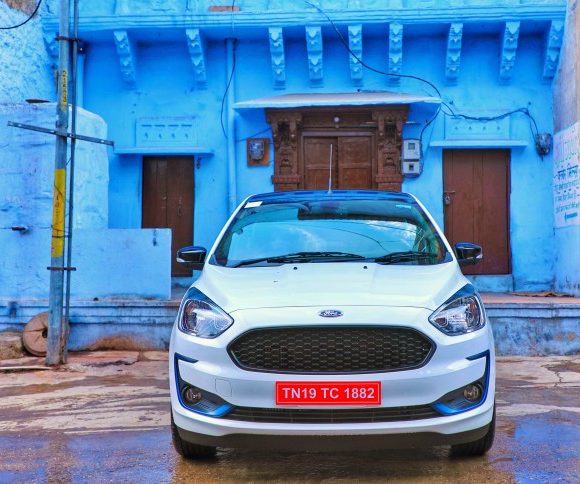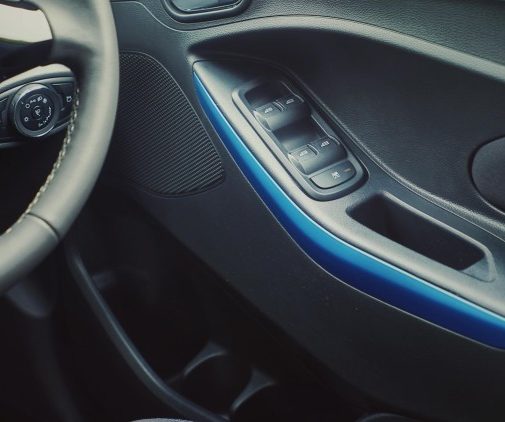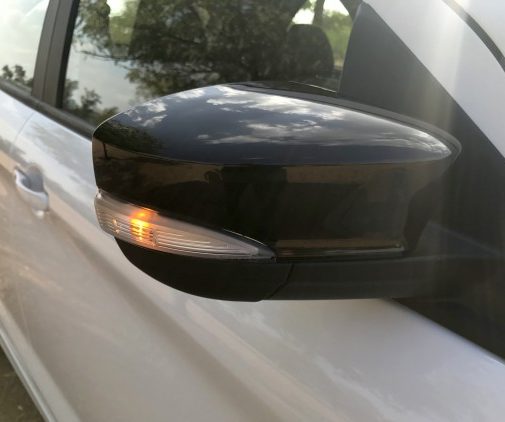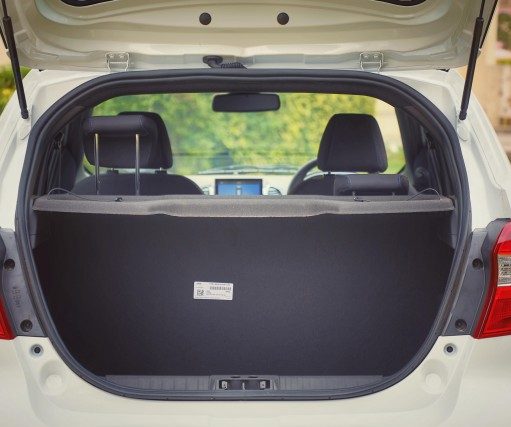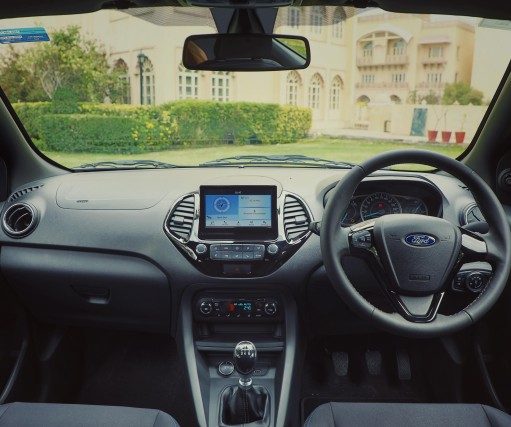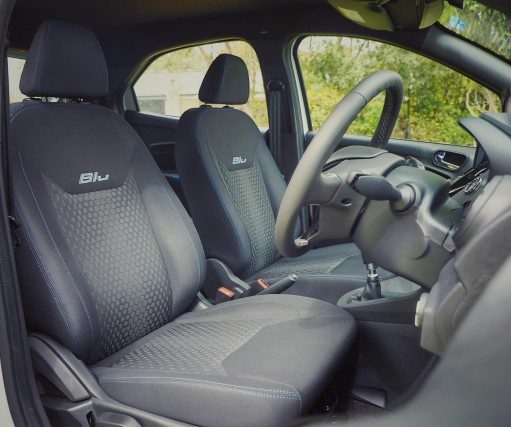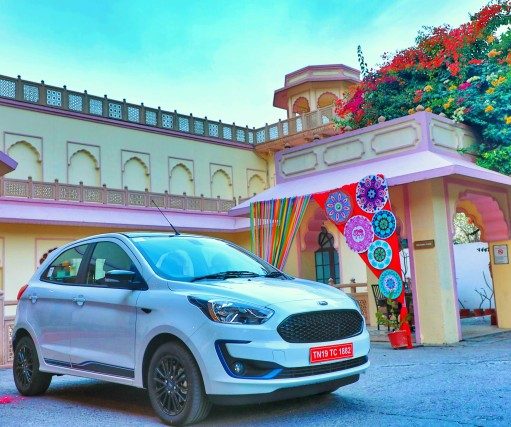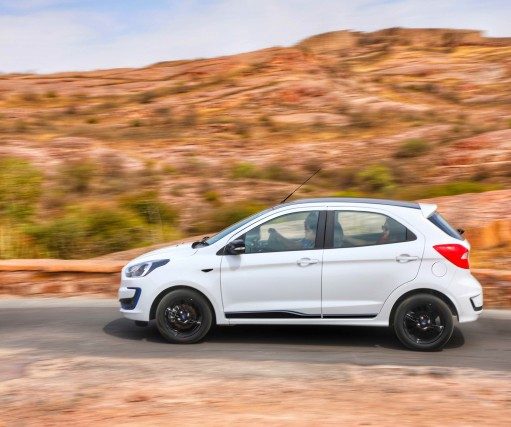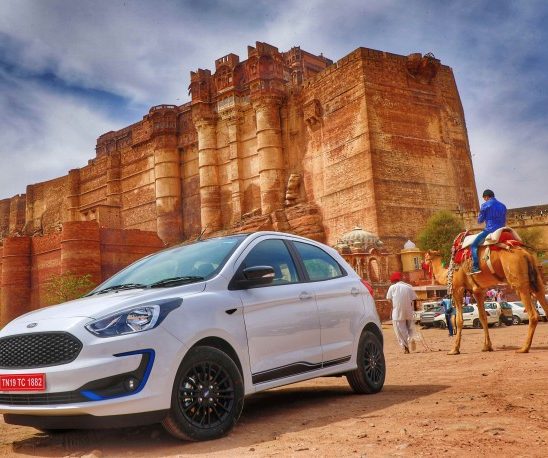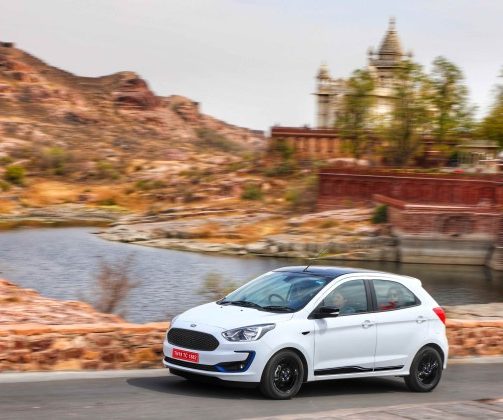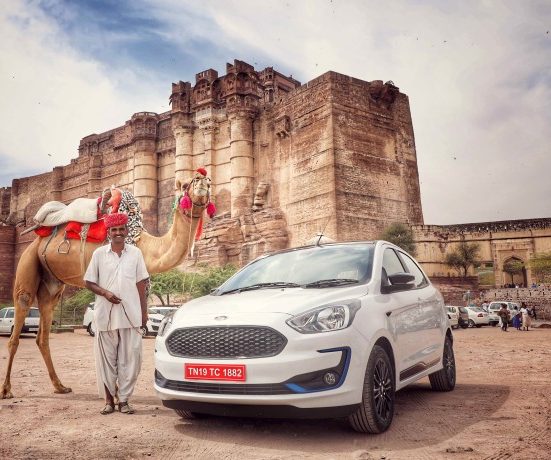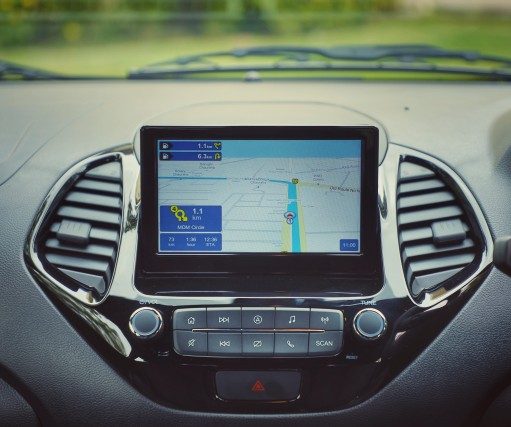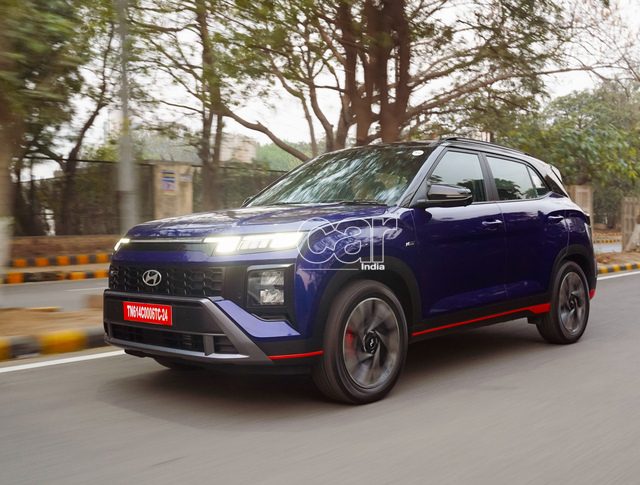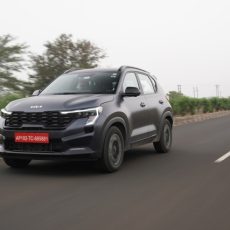The Ford Figo has received a mid-life makeover with new petrol engines and a new automatic gearbox along with design upgrades and host of new features. We head to Jodhpur the blue-city of Rajasthan to test drive the new top-of-the-line Ford Figo Titanium Blu!

Design
The overall design and sheet-metal parts remain unchanged, but it gets small styling updates that make the 2019 Ford Figo look more modern and sportier than before. The Figo S seems to one of the major influences, which isn’t a bad thing. The new, all-black front grille is more prominent now, while the fog lamps get blue coloured bezel, both of which make the front appear bolder. The side profile hasn’t changed either but it does get sporty decals and the Blu also comes with dual-tone roof, black wing-mirrors and good looking black coloured 15-inch alloy wheels. The rear gets some more ‘Blu’ graphics and a new bumper, keeping to the sporty theme. These bits come together really well, giving the 2019 Ford Figo Titanium Blu a more desirable profile.
Cabin
The changes in the all-black cabin of the new Figo are more evident, especially in the Titanium Blu variant. The dashboard gets fewer buttons thanks to the new 7.0-inch touchscreen infotainment system borrowed from the Figo S. There aren’t many soft-touch plastic bits which make it seem less premium compared to the competition. The infotainment system doesn’t get the latest Sync 3 version and hence miss out vital features like Android Auto and Apple CarPlay, which is disappointing. It also doesn’t offer LED headlamps nor day-time running lights. The otherwise exhaustive features list of the 2019 Ford Figo Titanium Blu includes automatic headlamps, rain-sensing wipers and best-in-class six airbags – features often seen on more premium cars. (Also read: Ford Figo S Long Term Review)
Seats and Storage
The sporty interiors come draped in black fabric and the seats get trendy ‘Blu’ branding with bee-hive embellishments and contrasting stitches. Matching these are the blue highlights on the door panels, which to some may seem like overkill. There are ample cubbyholes for the front passengers, including a couple on the front door, centre console and lower half of the dashboard. At the back, you only get a single cup-holder and a couple of seat-back pockets. There’s 257-litres of boot space too, which can be increased by folding the rear backrest. Having split rear seats would have offered more flexibility, but this works too if you have to carry larger goods. The seats continue to offer good support and knee-room as before, but the welcome addition is the adjustable headrest on the rear seats which offer more comfort and safety now. The space at the back hasn’t changed and seem just about adequate, though competitors like the Grand i10 and Swift seem to be a tad more spacious.
New Ford Figo 1.2-litre Petrol
In Rajasthan, we got to drive the manual variants of the new 1.2-litre three-cylinder petrol and the familiar 1.5-litre diesel engines. There’s also an automatic variant – a 123-PS, 1.5-litre petrol with a six-speed torque converter automatic transmission, which we hope to drive sometime in the near future. The smaller petrol is the latest here, so let’s talk about that first. The 1,194-cc petrol unit has been derived from Ford’s Dragon family of engines and being all-aluminium and lightweight, it feels more modern and promises to be more frugal than before. On the Figo, it also produces a segment-leading output of 96 PS and 120 Nm and is mated to a new five-speed manual gearbox (MX65) which offers slicker shifts and has likeable short throws. For a three-cylinder, the engine is pretty refined with barely any annoying vibrations. Whatever little buzz there is at idling gets ironed out as it climbs the revs.
It’s not the quickest hatchbacks off its feet but feels the best when driven around 3,000-4,000 rpm. Mid-range performance is punchy and you can feel the horses rigorously at work. The three-cylinder has a sporty aural note, which along with the neat gearbox only makes the drive more enjoyable. Top-end performance isn’t one of its virtues and is just about adequate. The small petrol is more fun to drive in the city as compared to long hours on the highway. Lighter cars like the Maruti Suzuki Swift with K-series engine have an advantage there. Having said that, the comparatively heavier Figo feels more solid and, in turn, a safer car to be in. It’s also more efficient than before promising to return 20.4 km/l under test conditions.


